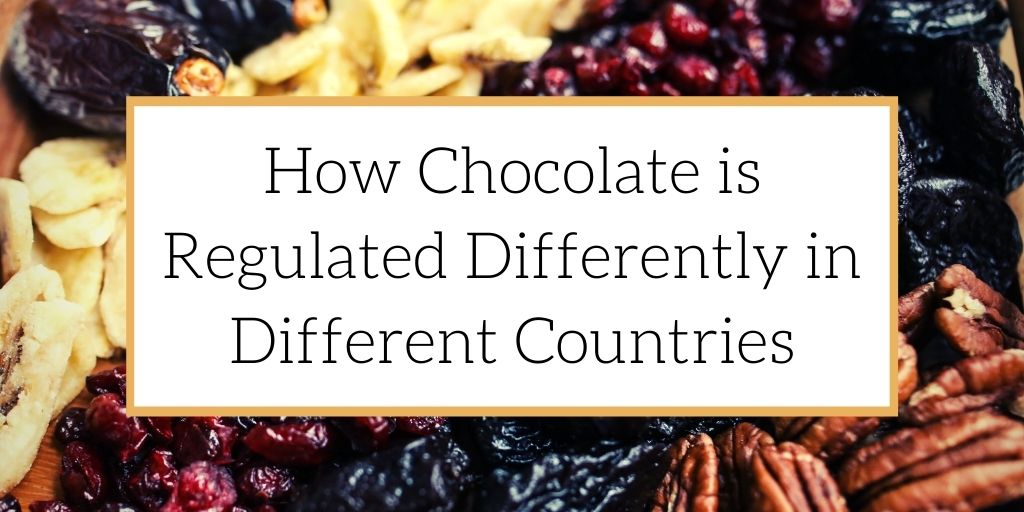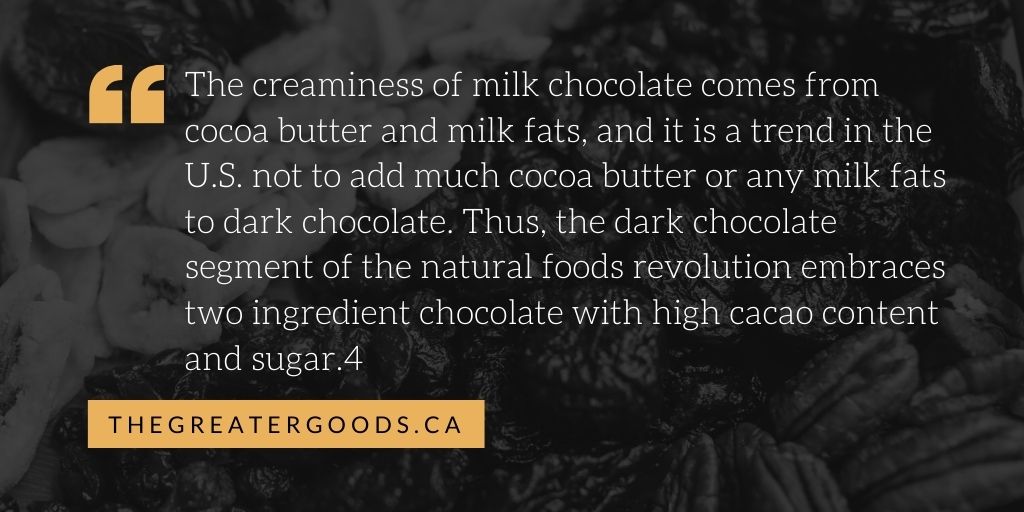You might not realize it, but chocolate has many regulations and requirements that it must meet in countries all over the world. Chocolate seems so simple but the regulations and requirements make it much more complex.
Chocolate is made from the cocoa bean that is found in South America. The cocoa beans are cleaned, roasted, and removed from the hull. Then the bean goes through a press that turns it into a chocolate paste known as chocolate liquor. The chocolate liquor is pure bittersweet chocolate in its most natural form. Only then is the chocolate liquor combined with other ingredients, like sugar, milk solids, and milk fats, to create the different types of chocolate that we know today.
Pure Chocolate Regulations in Different Countries
Chocolate is classified into different categories of products throughout the world. The most common 3 products of chocolate are pure chocolate, milk chocolate, and white chocolate.
Pure chocolate includes unsweetened, bittersweet, and semi-sweet chocolate. It is the category of chocolate that has the most cocoa mass and the least amount of sugar, making it rich in chocolate and not very sweet. There are many health benefits of pure chocolate. Pure, unsweetened chocolate is antioxidant, can help regulate blood pressure, and help protect your heart from plaque buildup.
Brain East Dean at Livestrong.com explains how pure chocolate helps our body. Dean writes, “The primary sources of antioxidants in most people’s diets are fruits, vegetables, and whole grains. However, chocolate is an excellent supplementary source of a class of antioxidants known as flavanols, which come from the cocoa beans used to make chocolate. Flavanols can reduce high blood pressure, decrease cholesterol, and boost circulation.”
Each country recognizes pure chocolate as a type of chocolate that has the largest cocoa mass and the percentage at which it is classified changes among the countries.
In the United States, pure chocolate must have at least 35% cocoa mass to be classified as a type of pure chocolate (bittersweet, semi-sweet, etc.).
In Japan, pure chocolate must have 60% cocoa mass. In Canada, pure chocolate must have 31% cocoa mass to be classified as pure chocolate.
Each country has requirements that regulate how much cocoa mass should be included in the chocolate product for it to be classified as chocolate.
Milk Chocolate Regulations in Different Countries
Chocolate that is combined with milk products is called milk chocolate. Milk chocolate will have sugar, milk solids, milk fats, and other additives to keep the chocolate smooth and combined.
For chocolate to be labeled as chocolate in the United States, it must have a minimum cocoa mass of 10%, but this is not the standard in other countries.
In Canada, the minimum cocoa mass is 25% for milk chocolate. In Europe, the minimum cocoa mass for milk chocolate is 35%.
As you can imagine, different cocoa mass requirements can cause a different taste among the different types of milk chocolate manufactured all over the world.
Because American milk chocolate has a lower cocoa mass with a higher sugar content, it has a different taste than European milk chocolate that has a staggering 35% regulation.
Susan Paretts with oureverydaylife.com describes why this is by saying, “Chocolate manufactured in the United States is generally sweeter than chocolate produced in European countries. This is mainly due to the fact that American chocolate contains less cocoa, which allows for the addition of more sugar or other carbohydrate sweeteners. European chocolate contains more cocoa and thus, less sugar.”
White Chocolate Regulations in Different Countries
Until 2002, white chocolate was not recognized in the United States as a chocolate. The FDA ruled that chocolate must contain chocolate liquor to be considered chocolate. However, chocolate liquor wouldn’t exist without cocoa butter, the fat that is found inside the cocoa bean before it is pressed to make the paste.
This is how white chocolate finally became recognized in 2002 by the FDA as being classified as chocolate, but there was a catch. In order for white chocolate to be classified as white chocolate, it must contain at least 20% cocoa butter. The cocoa butter will then be combined with sugar and milk solids to give it a sweet and creamy taste.
All countries that regulate chocolate follow the 20% cocoa butter regulation. The only location that doesn’t have a regulation on any of their chocolate is Hong Kong, China. Their Food and Environmental Hygiene Department regulates the ingredients that go into making chocolate, rather than the chocolate itself.
Meredith Allen at web.colby.edu further explains, “White chocolate, on the other hand, was not considered chocolate in the United States until 2002, when the FDA eliminated the regulation that products must contain chocolate liquor to be considered chocolate rather than a confectionery. The FDA instead regulated that white chocolate must contain at least 20 percent cocoa butter.”
Who knew chocolate could have so many rules, requirements, and regulations? The Greater Goods is here to help you with anything you need to know about food regulations that expand farther than just chocolate. Book a free consultation with us today so that we can help your business grow.

